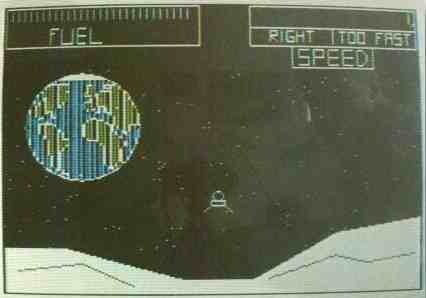Part 2: My First Computer - The "CoCo"
(continued from part 1, "How it all began")
My First Computer - The "CoCo"
So in May 1983 a green screen showing 32x16 black characters appeared on the TV screen in my room. From this day on, I was completely hooked. At first, my father tried to learn BASIC, too, but after some time he lost interest in programming and became what could be best described as an "advanced user". Programming turned out to be very frustrating. With about 5 days of programming experience I tried to write a "Space Invaders" clone - the first of my many software development disasters.
What became pretty clear after rather short time was that the "TRS-80 Color Computer" was a rare thing in Germany. It was only sold in Tandy stores, definitely not to be found in every town. One day we were told by word-of-mouth that a newspaper shop in Cologne (about 25km from Bonn) sold imported US magazines exclusively covering the Color Computer: "Hot CoCo" and "The Rainbow". That was a turning point, because the program listings where the first "large" programs I could use as programming examples. My father, being a fast typist, did the monotoneous work of typing in the listings line by line, page by page. After playing around with e.g. a game typed in from a magazine for some time, I began modifying the code. I learned a lot reading other people's code, but still it was pretty tough.
It was a strange situation. More and more people around me started using computers, but no one was seriously into programming. To them, I was the "guy who could really program", but I knew how limited my abilities were. I started project after project, few of them were actually finished. Loss of interest, or code I could not understand myself after a few days - there were many reasons. One of the few projects I did actually finish was the inevitable "Lunar Lander":

Note that the game used a black/white graphics mode (256x192 Pixels). The colors blue and green are in fact produced by the TV set, depending on the pattern of vertical black and white lines. This trick didn't really work too well on the PAL system used in Europe; in the US, with its NTSC system, a lot more colours could be produced.
I also attempted to learn assembly language using a book about the 6809 processor - but I simply had too little information about the computer itself to do anything useful. At least I learned the absolute basics (e.g. binary and hexadecial numbers).
In 1984 I had the opportunity to take a Pascal course. Coming from a completely self-taught BASIC background, without any education about algorithms and data structures, I was pretty much shocked. It was so hard for me to write code without GOTOs. The implementation of the Pascal compiler running on a Philips P2000 machine wasn't too exciting; everything was slow and I didn't really see any advantage over the BASIC of my CoCo. I finished the course to get a certificate, but couldn't envision myself programming in Pascal.
In fall 1984 it became pretty clear that the CoCo was some kind of a dead-end. The Commodory C64, after dropping in price significantly, became really popular, and games for the C64 showed what this computer could do, pushing the limit more and more. But I wanted a computer that would be easy to write programs on, and that definitely wasn't the case on the C64 (at least compared to my CoCo). To my rescue came a new computer that got a lot of hype in the magazines: the Schneider CPC 464, the German version of the Amstrad CPC 464. With a monitor showing 80x25 characters included, that machine was pretty hot. It lacked the hardware sprites and the sound capabilities of the C64, but that didn't matter to me. I wanted such a computer so badly, that I cannot count how often I sat on my bed reading every bit of information I could get my hands on over and over again. Fortunately my father got equally excited, so Christmas 1984 a CPC 464 was standing next to the christmas tree.
(To be continued in part 3: "My Second Computer - Codename Arnold")